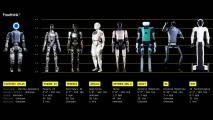Australian researchers have developed a snake-like soft robot, designed to 3D print living cells right inside patients’ bodies — and it might one day eliminate the need for invasive surgeries to transplant 3D-printed tissues and treatments.
3D bioprinters: Like traditional 3D printers, 3D bioprinters lay down ink layer by layer to construct three-dimensional objects. The only difference is they use bioinks that contain living cells.
Armed with 3D bioprinters, researchers are creating cartilage for reconstructive rhinoplasty, stem cell patches to repair babies’ hearts, and ear implants for children born with birth defects.
3D bioprinting can’t yet eliminate the need for invasive implantation surgeries.
3D bioprinting makes it easier to create tissues in precisely the shape and size needed, and because a patients’ own cells can be used in the ink, the risk of rejection is minimized.
However, bioprinting can’t yet eliminate the need for invasive implantation surgeries.
“Existing 3D bioprinting techniques require biomaterials to be made outside the body, and implanting that into a person would usually require large open-field open surgery which increases infection risks,” said Thanh Nho Do, a biomedical engineer at UNSW Sydney.
The idea: Do has now led the development of F3DB, a flexible soft robot that could be inserted into the body through a small incision and then used to 3D bioprint parts right where they’re needed.
“Our prototype is able to 3D print multilayered biomaterials of different sizes and shape through confined and hard-to-reach areas, thanks to its flexible body,” said Do.
How it works: The researchers developed several prototypes with heads ranging in diameter from 20 mm to 11 mm — the smallest version is about the size of the endoscopes currently used to inspect the interiors of colons.
The system works similarly to conventional desktop 3D bioprinters, according to the researchers, and it can be controlled manually during a surgery or preprogrammed to print a certain shape.
In addition to printing bioinks, the soft robot can operate as an endoscope, electric scalpel, and water dispenser — the researchers have demonstrated these functions in an artificial colon and a pig’s intestine and kidney (although not in the animal’s body).
“Compared to the existing endoscopic surgical tools, the developed F3DB was designed as an all-in-one endoscopic tool that avoids the use of changeable tools which are normally associated with longer procedural time and infection risks,” said researcher Mai Thanh Thai.
Looking ahead: The bot will need to undergo in vivo testing in animals before researchers could start thinking about human trials — they expect it’s about 5 to 7 years away from being ready for clinical use, assuming everything goes according to plan.
If the robot clears development, doctors could potentially use it to treat colorectal cancer, which is the second most common cause of cancer deaths — once inserted into a colon, the robot could cut away a hard-to-reach tumor, and then 3D bioprint material to promote healing on location.
The researchers also believe the system could be scaled down for other uses, so perhaps one day, instead of 3D bioprinting patches and then sewing them onto babies’ hearts in open-heart surgery, doctors will be able to use a version of F3DB to print the patches right where they’re needed.
We’d love to hear from you! If you have a comment about this article or if you have a tip for a future Freethink story, please email us at [email protected].





